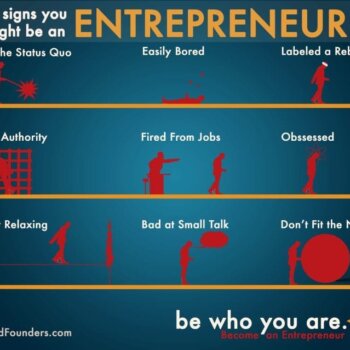(This is one in a series of articles and interviews about the inner workings of startups: what makes their leaders tick, what do they consider makes great leadership, what do startups do to attract investors, etc. )
Serial Entrepreneur, Executive Coach, Dream Interpreter, multiple Patent Holder, Ex-Software Engineer: Aneace Haddad (www.aneace.com) is a business leader who is comfortable across different roles, industries, disciplines, and organizations. We recently had an opportunity to meet him in Singapore and discuss startups, leadership, creativity, and his analogy of startup offerings as Vitamins, Painkillers, or Cocaine.
Hi, I’m Marion Neubronner, and I’m reporting for Asian Entrepreneur. And today, we are interviewing Aneace Haddad, who has been in the startup arena for some time. And I wanted to see what he has to teach us about his startup leadership.
Tell us more about yourself and the current startup that you’re in.
So, real quick about myself. I’ve been in startups for 30 years. My last big one, I created in France in 1996. Grew that to 30 countries, over 130 people. It was credit card marketing software. We had a million merchants onboard. Sold that in 2007, just before the crash. And then created a new one, my latest startup, my more recent startup. Basically doing the same thing as before, but using social media and Amazon web services. So where I needed 130 people before, now, if it’s doing the same 30 countries, probably I could do it with 10 people. So it’s a lot faster, a lot simpler, a lot more modern with social media. Basically brings Facebook to the point of sale.
Alright. And the name of this lean startup?
Taggo. [www.taggo.me] So that way, merchants can recognize their fans at the point of sale just by entering a mobile number, whereas usually you have to show your phone, which shows that you’ve liked the place, and it doesn’t capture any data.
Here, we give them a little access on the point of sale, where the cashier could say “Are you a fan?” The customer says “yeah” and then they enter the customer’s mobile number to check. And that’s how the, cashier registers that you are a fan, registers the transaction, and it creates a check-in on Facebook. So, they get word-of-mouth advertising.
So basically, you’re doing a new service that combines a lot of different technologies together, and really, you’re doing well, from what I’ve gathered. You don’t even need any more funding. You’re way ahead of the game.
Yes. We don’t need any funding right now. It’s great. I mean, it’s a very tight, small, lean operation. Right now, we are looking for resellers globally, channels to market. In the past, I worked with a bank, so that’s how my last company grew. This time around, I’m looking more for ad agencies.
You came into the startup industry like, 30 years ago. I think some of us never even heard of startups until last year, right? Why startup for you? What’s the difference in the leadership that you have to do, being a startup leader? Joys and challenges?
So, for me, it’s because nobody wants to hire me. Nobody has ever wanted to hire me. I wanted to do my own thing. I don’t like copying other stuff. I don’t like executing somebody else’s plan. I love to create my own. Originally, I was a writer when I was young. In my spirit – I am a creator, I am a writer, fiction writing. And I find that startups are very much like that. It’s because you’re creating something from scratch. You’re creating a vision, you’re painting a vision. And customers follow, or they don’t. Employees follow, or they don’t. Shareholders follow, or they don’t. So, it’s a very, very creative process. And that, to me, is much more. I need to express myself. For me, it’s art. Startup work is very, very much like an art to me.
So, as a leader, what will that entail the leadership to be like, to do this art?
I mean, crystal clear vision, for me, that’s a big one. Crystal clear vision on what your purpose is, what is problems you’re trying to fix, what’s exciting about it, where is it going to go, why is the market moving in that direction, why is the technology moving in that direction, why is what you’re doing important.
So, a lot of vision that to me, it’s the same space as writing, dreaming even. So people like, Larry Page, who said a number of times, when he was 23 years old, he had a dream at night of downloading the Internet into his PC, keeping only the links. So he woke up from that, and he starting coding furiously. And that became Google. So, to me, it’s the same kind of creative process.
So, I think, there are actually many different types of startup leaders. But some of them are execution people and sales people, so they will copy some other ideas to execute and solve, and do very well. Or improve on it. Usually, it’s a minor improvement. People, like Rocket Internet, have pretty much wiped out that market. So, Rocket Internet can do it much better than any other individual startup leader.
So, to me, really, the only choice for startups is to go into the much more creative side, much more intuitive, much more creative, so that they really come up with brand new ideas that nobody’s thought of. And you want people to say, “Where did you get this idea from?” “Why are you doing that?” “That’s so weird.” And that’s where the magic happens. So it’s really creative. That’s why I like it.
I’ve never thought of it like that.
It’s art!
It’s art!
Right, I do a lot of work with leadership development. And basically, I help inform leaders how to position themselves better as a leader for their team, but also for external people. Like clients, and in your case, most startup investors. So, knowing what you know now, how would you inform a startup leader to best position themselves so that investors will invest in them? What are investors looking for?
So, I have a little framework which took me many, many years to put together with three basic questions that need to be answered in, like, five minutes.
Are you willing to share it with my people?
Yes. I’ll put it out there right now. For free.
So three big questions that needs to be answered in a pitch, that can be in like two minutes.
“So what?” – So what my startup – what it’s doing.
“Who cares?”
So if you can answer “So what?”, why it’s important, and you can answer “Who cares?” – so you really know who your market is.
And “Why me?”
So if you can answer all three of these questions, then you have a much potential for success. And you know, it’s not about the technology. It’s not about the product. It’s more about the real gut feel on why what you’re doing is important.
So, these are three questions. And then, there are three product categories that I also use to form this. So, “So what?” “Who cares?” “Why me?” And then, on the other side, when you look at whatever product or service you’re selling, always fits into one of three categories:
You’re either selling vitamins, so that’s where something that I might see or may do you good in the future, you don’t’ want to pay a lot of money for this. It’s nice to have.
Or you’re selling painkillers – so if you have a headache, you need something to get rid of the pain.
Or you’re selling cocaine – where it doesn’t really matter – people are just addicted. So, cocaine is Facebook, Apple, all these things are good, and there’s more and more cocaine coming out now.
So, if you look at vitamins, if you’re someone that is selling on a spreadsheet, you have to use a spreadsheet for ROI to convince the customer, you’re probably selling vitamins. If you don’t need much of a spreadsheet, like a very small spreadsheet, might be painkiller. If you don’t need any spreadsheet at all, you’re probably selling cocaine. So, it’s also a different leadership style for each. And different categories of buyers. So that, to me, is a very powerful “So what?” “Who cares?” “Why me?” Vitamins, Painkillers, and Cocaine.
For more information about Taggo: www.taggo.me
For more information about Aneace: http://www.aneace.com/































